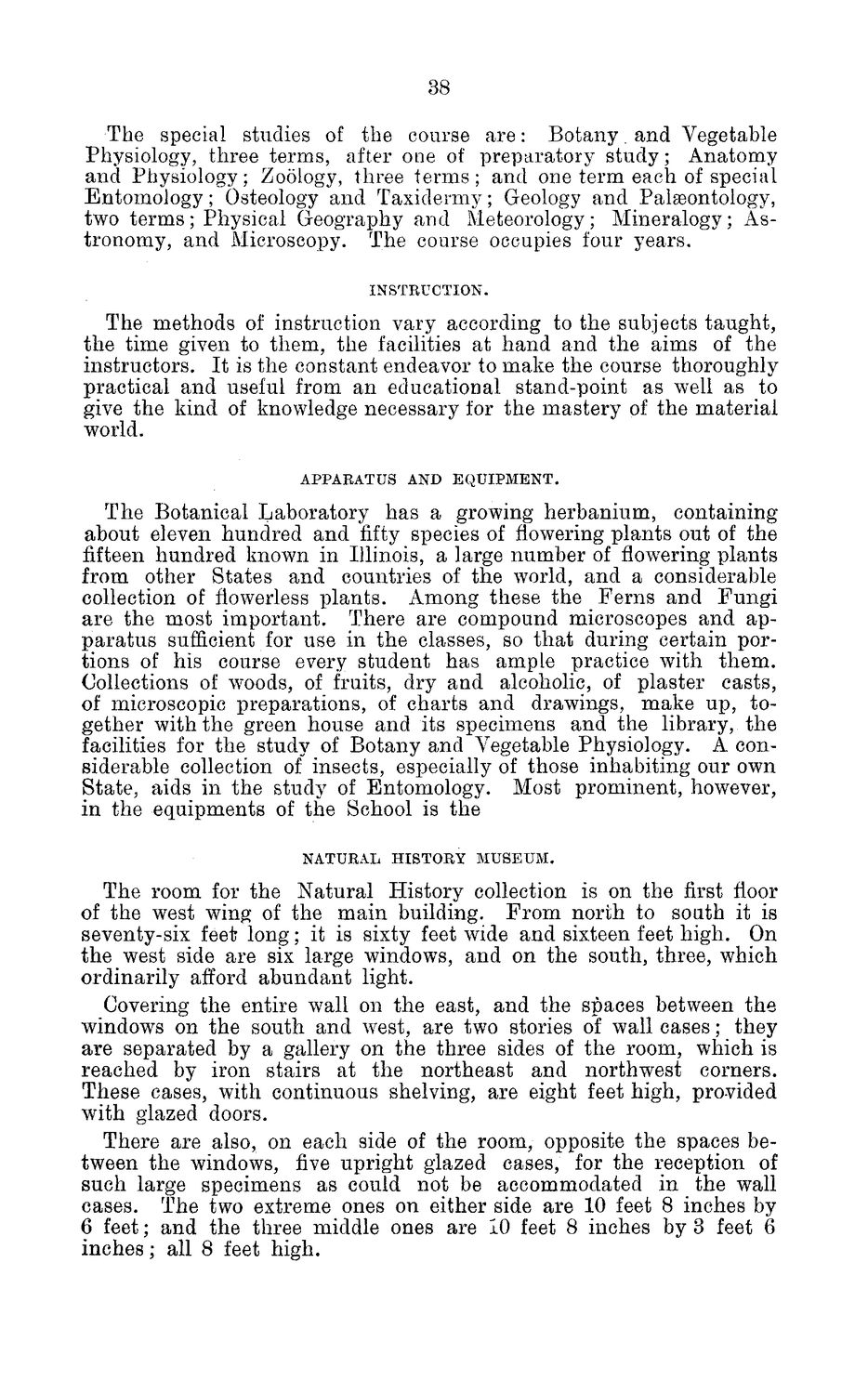| |
| |
Caption: Board of Trustees Minutes - 1884
This is a reduced-resolution page image for fast online browsing.

EXTRACTED TEXT FROM PAGE:
38 The special studies of the course are: Botany. and Vegetable Physiology, three terms, after one of preparatory study; Anatomy and Physiology; Zoology, three terms; and one term each of special Entomology; Osteology and Taxidermy; Geology and Palaeontology, two terms; Physical Geography and Meteorology; Mineralogy; Astronomy, and Microscopy. The course occupies four years. INSTRUCTION. The methods of instruction vary according to the subjects taught, the time given to them, the facilities at hand and the aims of the instructors. It is the constant endeavor to make the course thoroughly practical and useful from an educational stand-point as well as to give the kind of knowledge necessary lor the mastery of the material world. APPARATUS AND EQUIPMENT. The Botanical Laboratory has a growing herbanium, containing about eleven hundred and fifty species of flowering plants out of the fifteen hundred known in Illinois, a large number of flowering plants from other States and countries of the world, and a considerable collection of flowerless plants. Among these the Ferns and Fungi are the most important. There are compound microscopes and apparatus sufficient for use in the classes, so that during certain portions of his course every student has ample practice with them. Collections of woods, of fruits, dry and alcoholic, of plaster casts, of microscopic preparations, of charts and drawings, make up, together with the green house and its specimens and the library, the facilities for the study of Botany and Vegetable Physiology. A considerable collection of insects, especially of those inhabiting our own State, aids in the study of Entomology. Most prominent, however, in the equipments of the School is the NATURAL HISTORY MUSEUM. The room for the Natural History collection is on the first floor of the west wing of the main building. From north to soath it is seventy-six feet long; it is sixty feet wide and sixteen feet high. On the west side are six large windows, and on the south, three, which ordinarily afford abundant light. Covering the entire wall on the east, and the spaces between the windows on the south and west, are two stories of wall cases; they are separated by a gallery on the three sides of the room, which is reached by iron stairs at the northeast and northwest corners. These cases, with continuous shelving, are eight feet high, provided with glazed doors. There are also, on each side of the room, opposite the spaces between the windows, five upright glazed cases, for the reception of such large specimens as could not be accommodated in the wall cases. The two extreme ones on either side are 10 feet 8 inches by 6 feet; and the three middle ones are 10 feet 8 inches by 3 feet 6 inches; all 8 feet high.
| |